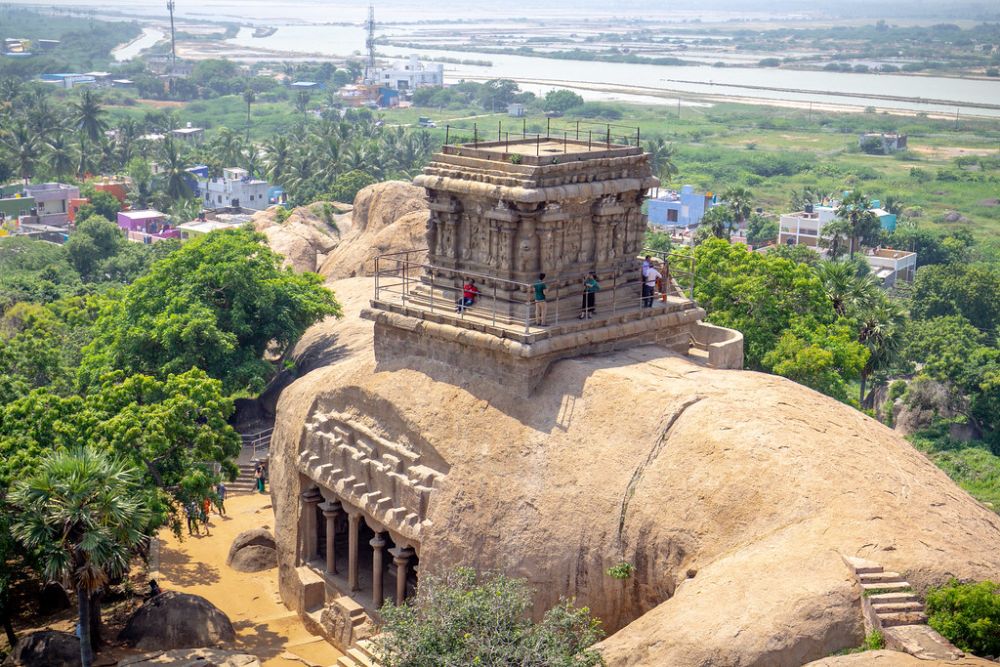

Mahabalipuram, also known as Mamallapuram, located in Tamil Nadu, India, is a historic town renowned for its impressive rock-cut caves, stunning carvings, and intricate temples. Among its multitude of ancient artistic marvels stands the Mahishamardini Cave, an important sculptural exemplar among the group of monuments that highlight the ingenuity of the Pallava dynasty in the 7th and 8th centuries.
The history of this significant site traces back to the reign of the Pallavas, a dynasty that flourished in South India and who are thought to be the pioneers of rock-cut architecture in the region. Particularly, the Mahishamardini Cave is attributed to the period of King Narasimhavarman I Mamalla after whom the town is named. The cave temple, dedicated to the goddess Durga and her victory over the buffalo demon Mahishasura, dates back to the late 7th century, illustrating religious reverence and artistic excellence.
Tourism at Mahabalipuram, including the Mahishamardini Cave, started to gain prominence with the archaeological explorations conducted by the British in the 19th century. Interest in the area's ancient culture led to its recognition and conservation efforts. The entire complex of Mahabalipuram's temples and carvings, including the Mahishamardini Cave, was designated a UNESCO World Heritage site in 1984, which marked a significant turning point in its tourism history.
Visitors to the Mahishamardini Cave are welcomed by an elaborate facade featuring meticulously carved guardian figures. Inside, the focal figure is the sculptural panel depicting Goddess Durga's triumph, accompanied by other divine representations carved out of the cave's rock walls. The cave's simplistic architecture combined with the spiritual essence exemplifies the early phase of South Indian temple architecture, which draws history enthusiasts and spiritual seekers alike.
In recent years, Mahabalipuram has seen a surge in sustainable tourism, where the focus is on preserving the cultural integrity of the site while enhancing the visitor experience. Efforts have been made to improve infrastructure, provide informative guides, and support local artisans. Additionally, there's a growing trend of combining visits to the Mahishamardini Cave with other nearby attractions, such as the Shore Temple and the Five Rathas, to offer a more holistic perspective of the region's remarkable heritage.
Preservation is key to the future of tourism in Mahabalipuram. Continuous efforts are in place to protect and maintain the Mahishamardini Cave alongside its surrounding monuments. With the increasing importance of heritage tourism, it is expected that the site will continue to draw in visitors from around the globe, fostering a deeper appreciation for ancient Indian history and architecture.
Overall, the Mahishamardini Cave is not just a tourist attraction but a testament to India's profound historical and cultural legacy that has significantly contributed to the evolution of tourism in the region of Tamil Nadu.